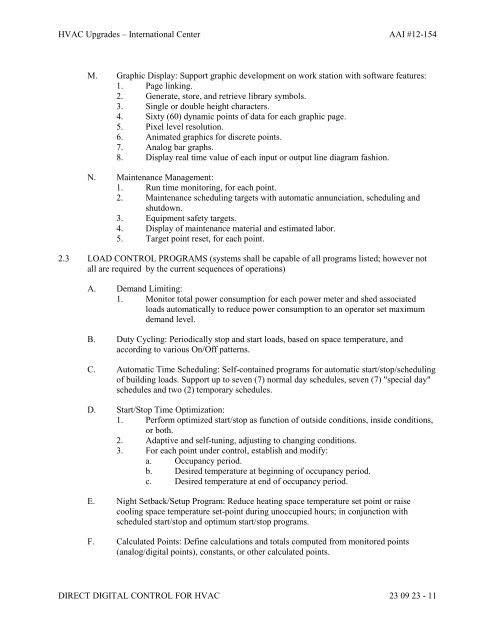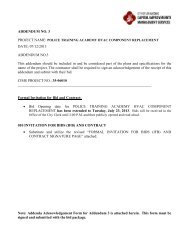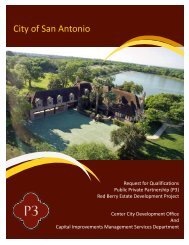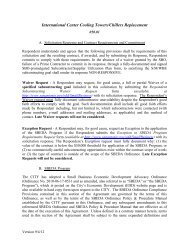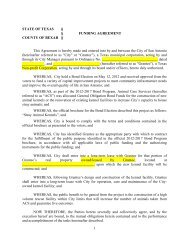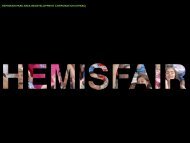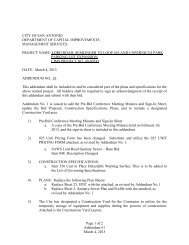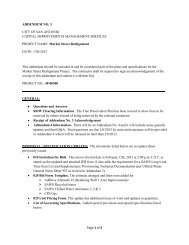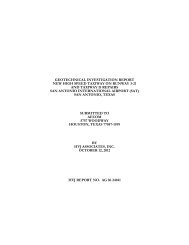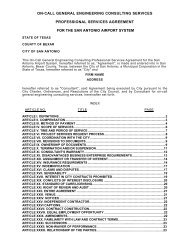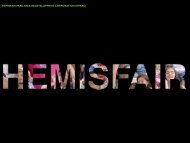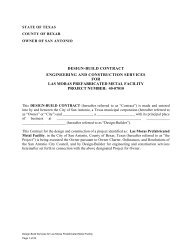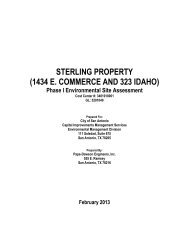ADDENDUM NO. 2 CITY OF SAN ANTONIO CAPITAL ...
ADDENDUM NO. 2 CITY OF SAN ANTONIO CAPITAL ...
ADDENDUM NO. 2 CITY OF SAN ANTONIO CAPITAL ...
Create successful ePaper yourself
Turn your PDF publications into a flip-book with our unique Google optimized e-Paper software.
HVAC Upgrades – International Center AAI #12-154<br />
M. Graphic Display: Support graphic development on work station with software features:<br />
1. Page linking.<br />
2. Generate, store, and retrieve library symbols.<br />
3. Single or double height characters.<br />
4. Sixty (60) dynamic points of data for each graphic page.<br />
5. Pixel level resolution.<br />
6. Animated graphics for discrete points.<br />
7. Analog bar graphs.<br />
8. Display real time value of each input or output line diagram fashion.<br />
N. Maintenance Management:<br />
1. Run time monitoring, for each point.<br />
2. Maintenance scheduling targets with automatic annunciation, scheduling and<br />
shutdown.<br />
3. Equipment safety targets.<br />
4. Display of maintenance material and estimated labor.<br />
5. Target point reset, for each point.<br />
2.3 LOAD CONTROL PROGRAMS (systems shall be capable of all programs listed; however not<br />
all are required by the current sequences of operations)<br />
A. Demand Limiting:<br />
1. Monitor total power consumption for each power meter and shed associated<br />
loads automatically to reduce power consumption to an operator set maximum<br />
demand level.<br />
B. Duty Cycling: Periodically stop and start loads, based on space temperature, and<br />
according to various On/Off patterns.<br />
C. Automatic Time Scheduling: Self-contained programs for automatic start/stop/scheduling<br />
of building loads. Support up to seven (7) normal day schedules, seven (7) "special day"<br />
schedules and two (2) temporary schedules.<br />
D. Start/Stop Time Optimization:<br />
1. Perform optimized start/stop as function of outside conditions, inside conditions,<br />
or both.<br />
2. Adaptive and self-tuning, adjusting to changing conditions.<br />
3. For each point under control, establish and modify:<br />
a. Occupancy period.<br />
b. Desired temperature at beginning of occupancy period.<br />
c. Desired temperature at end of occupancy period.<br />
E. Night Setback/Setup Program: Reduce heating space temperature set point or raise<br />
cooling space temperature set-point during unoccupied hours; in conjunction with<br />
scheduled start/stop and optimum start/stop programs.<br />
F. Calculated Points: Define calculations and totals computed from monitored points<br />
(analog/digital points), constants, or other calculated points.<br />
DIRECT DIGITAL CONTROL FOR HVAC 23 09 23 - 11


